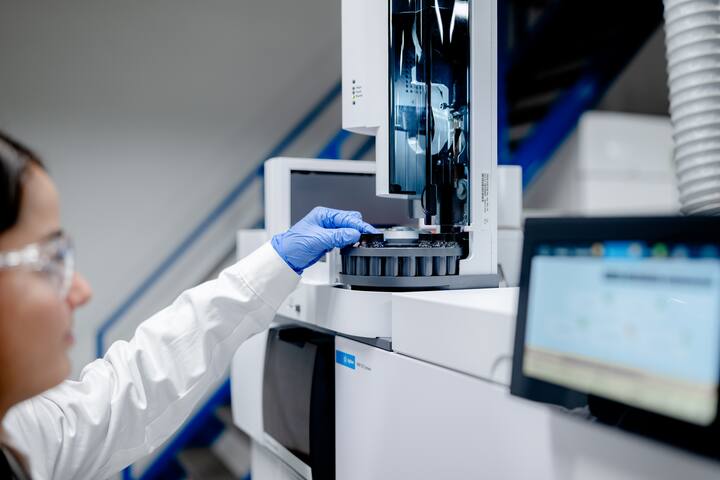
Why a Good Challenge Test Is Expensive – and Why That’s Justified
Challenge tests often represent a considerable investment. It’s not uncommon for companies to raise an eyebrow at the price tag of such a study. “Why does this take so long? Why are so many sampling points needed? Why do we need multiple strains? And does everything really have to be documented in such detail?” In this article, we explain the importance of a thorough challenge test and how costs can be saved by cleverly combining testing, predictive models, and product grouping.
The Cost Price of a Challenge Test Substantiated
A poorly executed challenge test is not only wasted money – it can lead to misleading conclusions, incorrect shelf life and, in the worst case: foodborne infections, product recalls and damage to your brand.
The reason a solid challenge test requires so much time and care is that food safety in practice is rarely black and white. The European guidelines, like those in the EU Technical Guidance Document on Shelf-life Studies for Listeria monocytogenes, rightly emphasise a realistic, substantiated and reproducible approach. Because food chains are complex and pathogens rarely behave predictably, such a test must approximate the real world as closely as possible.
As close to reality as possible
This means, for example, that the test product must be identical to the commercial end product. Even minor differences in pH, water activity, or packaging can have a significant impact on the growth of micro-organisms. Conducting a test under “ideal” laboratory conditions may seem convenient, but says little about what happens in a distribution chain with temperature fluctuations or minor deviations in practice.
The number of sampling points is also very important. If you only measure on day 0 and day 10, you can easily miss crucial growth phases. The growth of, for example, Listeria monocytogenes can start slowly, but accelerate once the competitive flora decreases. Without intermediate analyses, you will not observe this happening. And without such data, you cannot calculate the maximum growth rate or lag phase – precisely those parameters essential for risk assessment or modelling.
Another important aspect is the choice of strains used for inoculation. Using a single laboratory strain is not representative. Different strains – and especially wild types originating from similar products or production environments – behave differently. Only by using a mix can you get a reliable picture of the worst-case scenario. Moreover, these strains often need to be prepared, adapted and mixed, which in itself requires time and expertise.
The same applies to the natural flora of the product. In many challenge tests, the product is first pasteurised or filtered to ensure a “clean” start. However, that flora often plays a role in either the suppression or the stimulation of pathogenic growth. By removing the flora, you create an artificial situation. Therefore, sometimes a test must be carried out both with and without flora – depending on the product type.
In addition, regulations also require testing under not only ideal but also realistic and even adverse conditions. Consider storage at 7°C instead of only at 4°C, or simulating temperature fluctuations. These worst-case scenarios are not intended to cause panic, but to be prepared for realistic situations in the chain. Consumers rarely store products exactly as stated on the label.
Finally, every step in the test must be meticulously documented: which protocol was followed, which strains were used, how and when sampling took place, which criteria were defined in advance to determine whether growth is “acceptable”. Without such documentation, a test is useless during audits or inspections and indefensible in the event of incidents or questions from control bodies.
Want to know more about Listeria? Join the course with Wageningen Academy
So, is it truly impossible to save costs?
Absolutely not – working cost-consciously and ensuring food safety do not have to be mutually exclusive, provided you adopt the right approach. The key lies in a thoughtful combination of challenge tests and predictive models, as well as cleverly grouping products. Theoretical models, such as ComBase or FSSP, can provide valuable insights beforehand into the growth potential of pathogens in your products. These models are useful for estimating which product categories present a higher risk and which are more robust. Models do not replace testing, but they can support targeted decisions, such as which product to test and under what conditions. Read more here about the hybrid approach that combines models with challenge tests. Additionally, you can assemble product groups based on shared characteristics: pH, water activity, composition, storage temperature, and packaging. Provided this is properly substantiated, you can then select a representative ‘worst-case’ product that covers the entire group. Pay attention to the following points:

Select the weakest product within the group, for example, the one with the highest moisture content or lowest acidity.
Ensure the product has the same type of packaging and shelf life as the others.
Consider variations in production processes, such as whether the product is pasteurised or not.
Think about the intended consumer use: a salad eaten cold has different requirements than a product that is baked before consumption.
A well-considered product group, combined with a solid worst-case challenge test and supported by predictive models, ensures you do not need to test every product individually. This prevents unnecessary costs, without compromising safety or legal substantiation.
In summary
A thorough challenge test is rightly an investment, but it is also a powerful tool for mapping out risks, accurately determining shelf life, and avoiding disputes with inspection authorities or auditors. Those who recognise the complexity of such a test and deploy it wisely can work more efficiently in the long term. Combine models with practical studies, build substantiated product groups, and document your choices transparently. This way, you not only save money but also increase the credibility of your food safety policy.